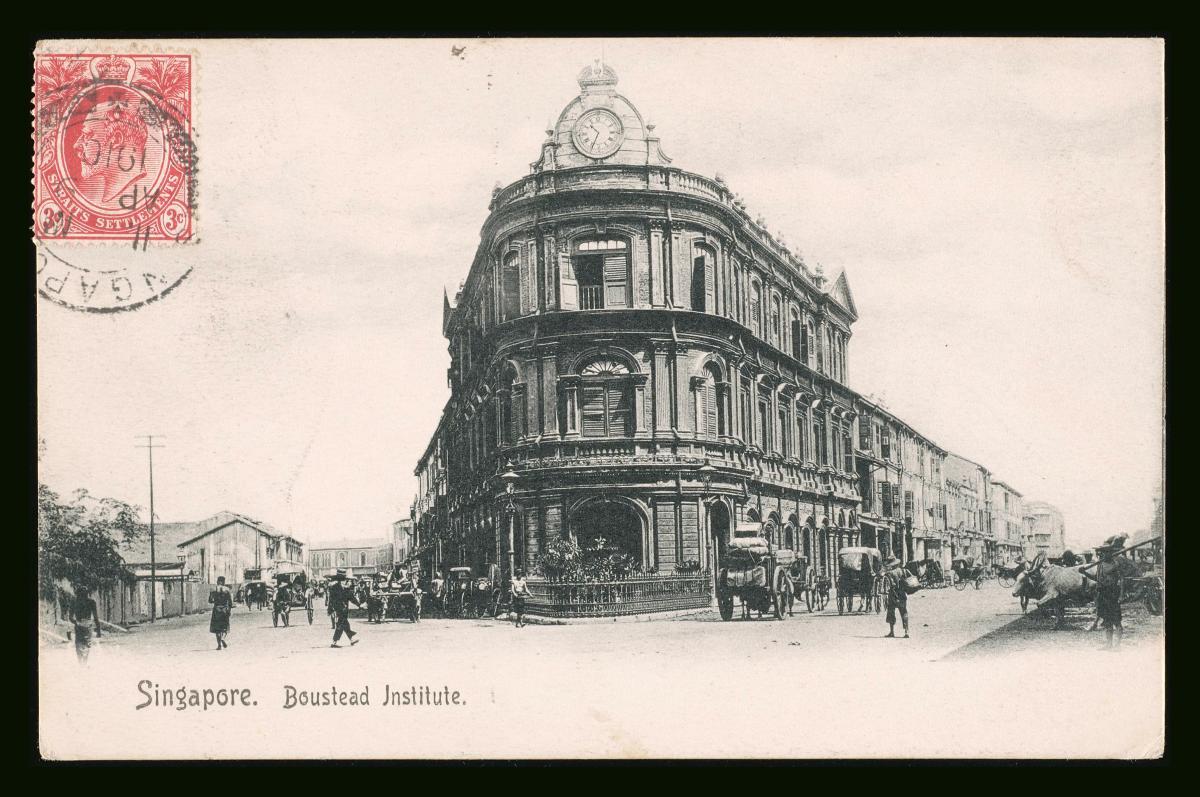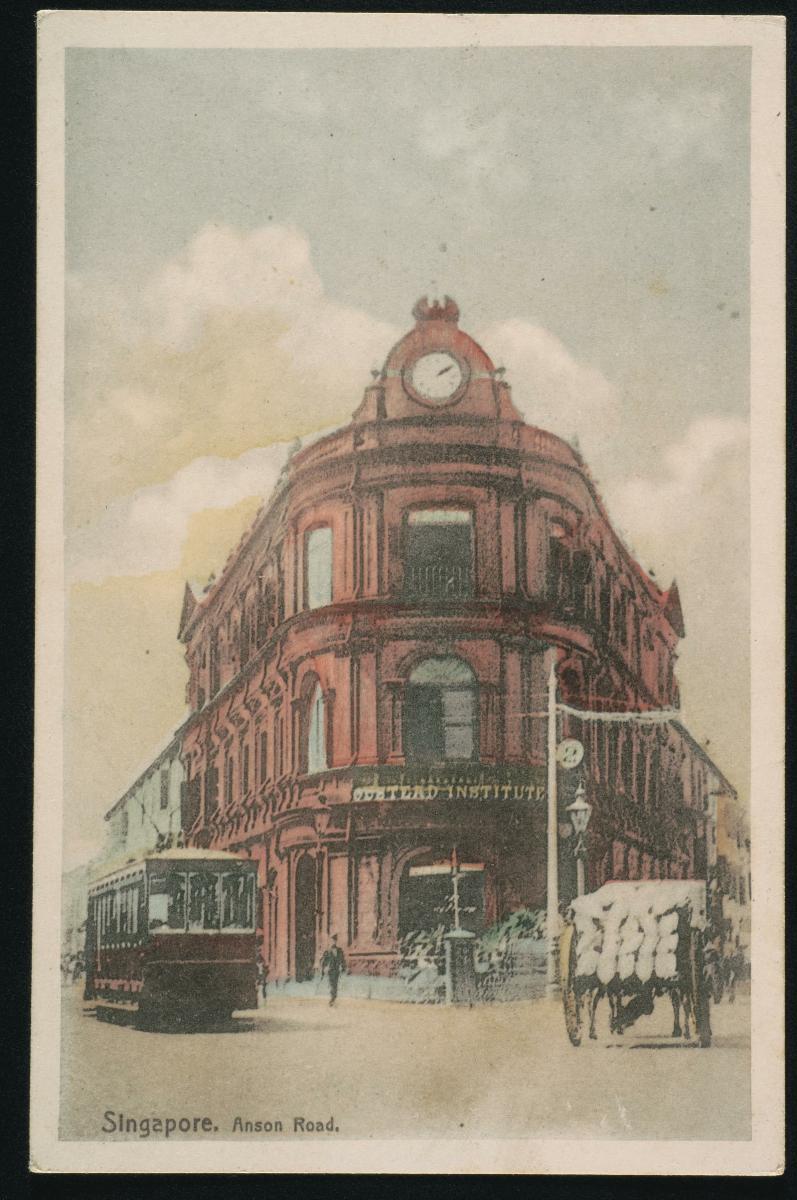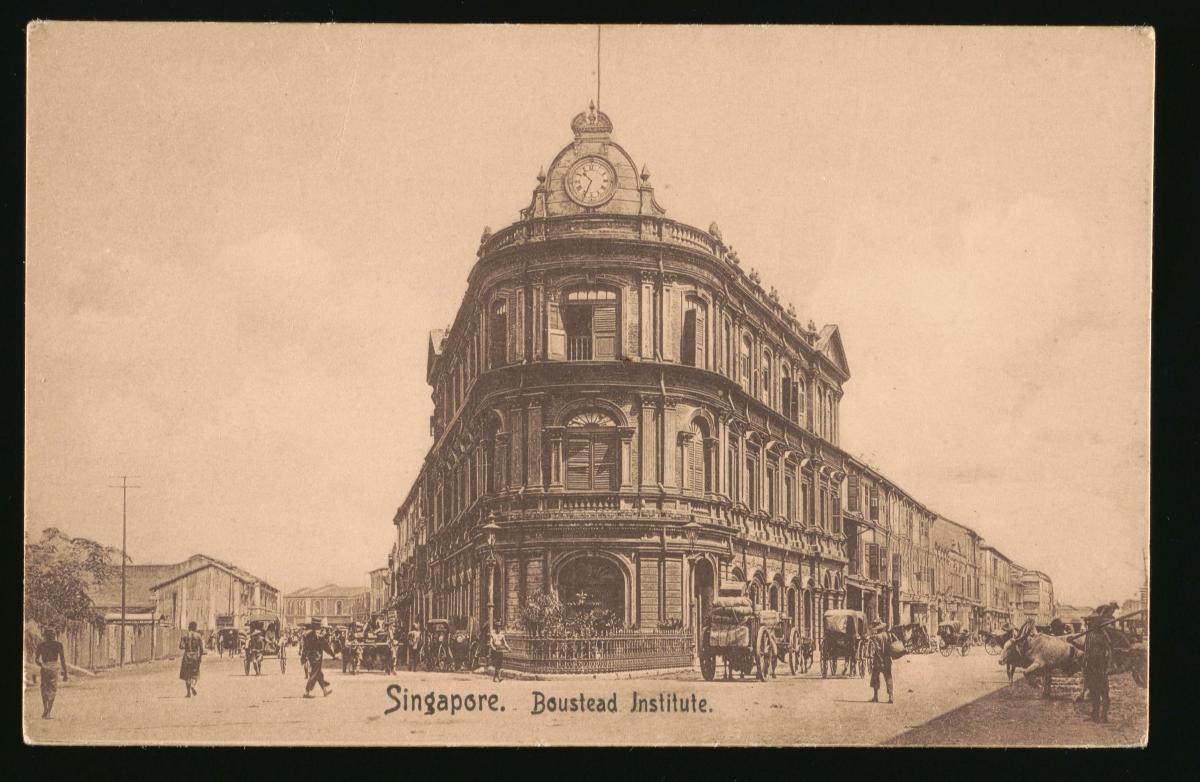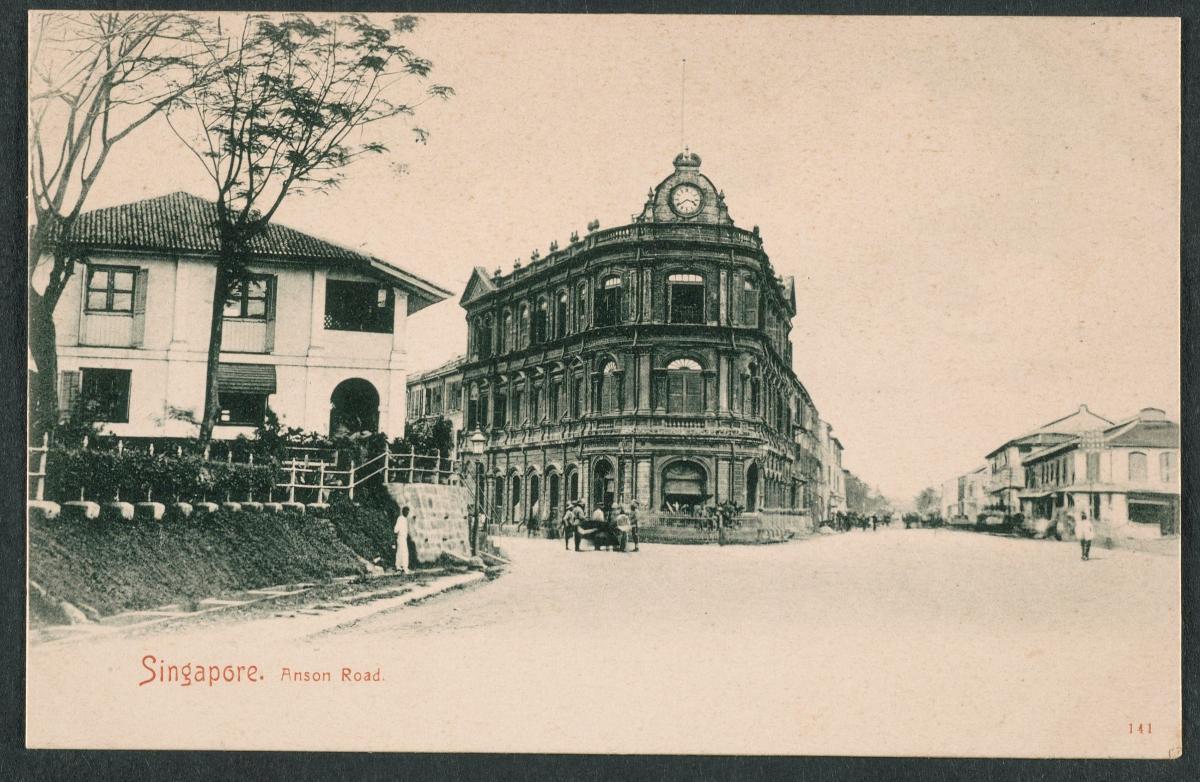This postcard is part of a set acquired by the museum. The collection provides a glimpse into the physical and social landscape of Singapore during the 19th and 20th century which were characterised by European colonialism, the Japanese Occupation, and the post-war years. These postcards also give a glimpse into the type of architecture that was seen in Singapore in those days, as well as the range of activities, businesses, trades, and industries that the people of Singapore were involved in at that time. Some of these postcards still contain the original handwriting of the senders themselves.The Boustead Institute was designated as a hostel for seamen living in Singapore. It was named after Sir Edward Boustead, the wealthy founder of the successful European merchant firm Boustead & Co., which had a large and imposing warehouse built by the famed architect, George Coleman, in Boat Quay. Boustead, who was concerned for the plight of seamen, bequeathed a sum of money upon his death in 1891 to finance the construction of a building for them. The Tanjong Pagar Dock Company donated the site for this project and the building was officially opened by the Governor of the Straits Settlements, Sir Cecil Clementi Smith, in 1892. The Anson Road institute became a port of call for seamen from around the world. Ownership of the building was changed in 1958 and for a while it was home to the famous bar, Toby’s Paradise. The building no longer exists as it was demolished in the late 1970s for port expansion works.















